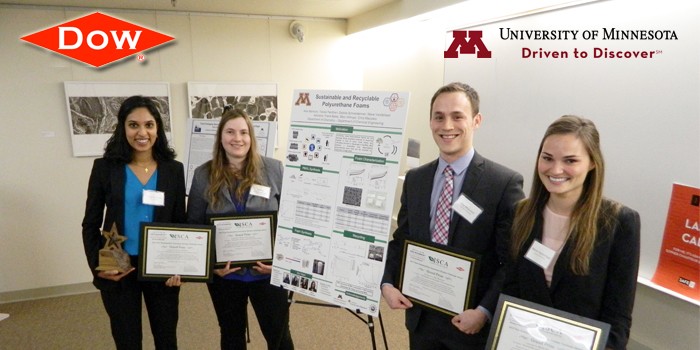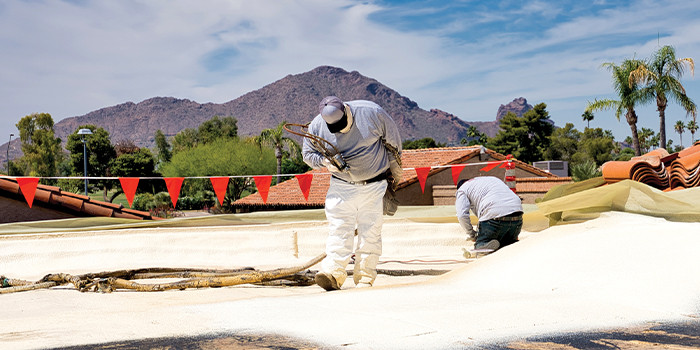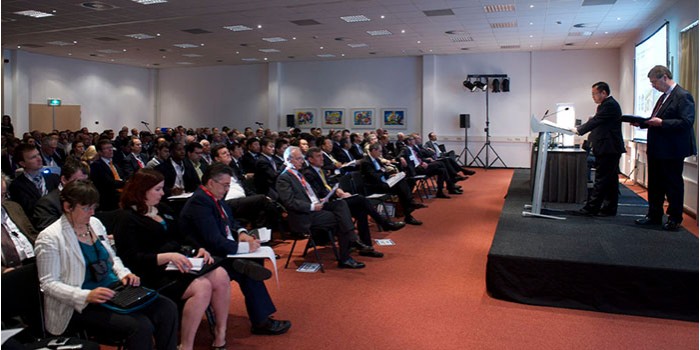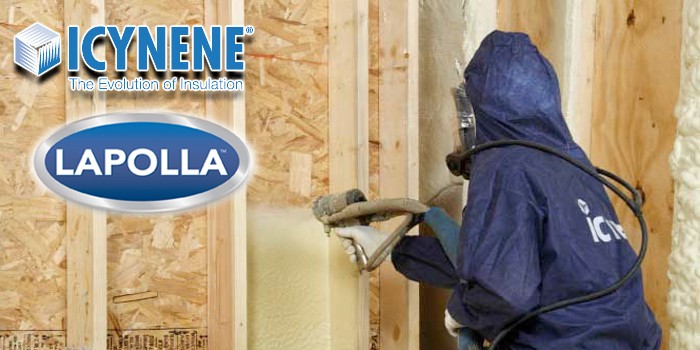Project to Develop Recyclable Polyurethane Foam Wins $10K Dow Sustainability Innovation Student Challenge Award

ST. PAUL, MN – January 6, 2015 – A project aimed at developing polyurethane foam that can be recycled won the Dow Sustainability Innovation Student Challenge Award competition held Dec. 3 at the University of Minnesota’s Institute on the Environment in St. Paul.
The award, made possible by a collaboration between IonE and the Dow Chemical Company, recognizes and rewards students and universities for innovation and research that encourages and promotes sustainable solutions to the world’s most pressing social, economic, and environmental problems. The competition is open to full-time graduate and professional students enrolled at all campuses of the University of Minnesota. This year’s award was presented to a team of four Ph.D. candidates in the University’s College of Science and Engineering.
“Polyurethane foams are useful and important materials that are utilized in a range of applications including mattresses, seat cushions and home insulation,” says Tessie Panthani, project team member and chemical engineering and materials science Ph.D. candidate. “Unfortunately, the majority of polyurethane foams are derived from nonrenewable resources, do not degrade in the environment, and have chemical structures that preclude these materials from being recycled by melt reprocessing.”
To address those limitations, the winning team, which also includes Alex Mannion, Debbie Schneiderman and Marie Vanderlaan, developed a polyol — the main building block for polyurethane foam — made from renewable sources that can degrade into environmentally benign products or be recycled, creating a closed-loop life cycle.
The winning project was one of 24 submitted to the University’s Dow SISCA challenge, one of 18 such competitions around the world. Judges were from Dow Chemical, Metropolitan Council Environmental Services and the University of Minnesota.
RELATED Lapolla's AirTight Program Leads to Green Building Retrofit Award, SES Foam Stresses the Importance of Adhering to Chemical Processing Guidelines
The runner-up, Gabriel Al-Ghalith — a biomedical informatics and computational biology student and researcher in the BioTechnology Institute— received $2,500 for developing techniques that use microbes as environmental and geochemical sensors.
Other finalists were:
- Snober Ahmed (bioproducts and biosystems science, engineering and management, College of Food, Agriculture, and Natural Resource Sciences) — Selenium Nanomaterials and Devices for Mercury Removal from Water and Gas Flue
- John Brockgreitens (BBSE, CFANS) — Food Packaging Sensors for Continuous Monitoring of Food Spoilage
- Abhirup Datta (biostatistics, School of Public Health) and Farideh Fazayeli (computer science, CSE) — Global Mapping of Plant Traits
- Lauren Jackson (plant pathology, CFANS) — Characterization and Optimization of Ligninolytic Systems to Improve Human and Environmental Health
- Peter T. Krenzke and Stephen J. Sedler (mechanical engineering, CSE) — Solar Fuels From Water and Carbon Dioxide via the Ceria Redox Cycle
- Maria Kristine McClintock (chemical engineering, CSE) — Developing a Portfolio of Value-added Monomers from Fermentation of Lignocellulosic Feedstocks
- Matthew Overby (computer science, CSE) — Efficient Simulation of Urban Heat Transfer
- Hao Tian (mechanical engineering, CSE_ — Variable Timing Active Valve Technology and “Steer-by-Wire” Valve Operation for Energy Efficient Fluid Power Systems
The University of Minnesota’s Institute on the Environment seeks lasting solutions to Earth’s biggest challenges through research, partnerships and leadership development. For more information on IonE, visit environment.umn.edu. For more information on the Dow SISCA program, see dow.com/sustainability/studentchallenge.
Disqus website name not provided.









































